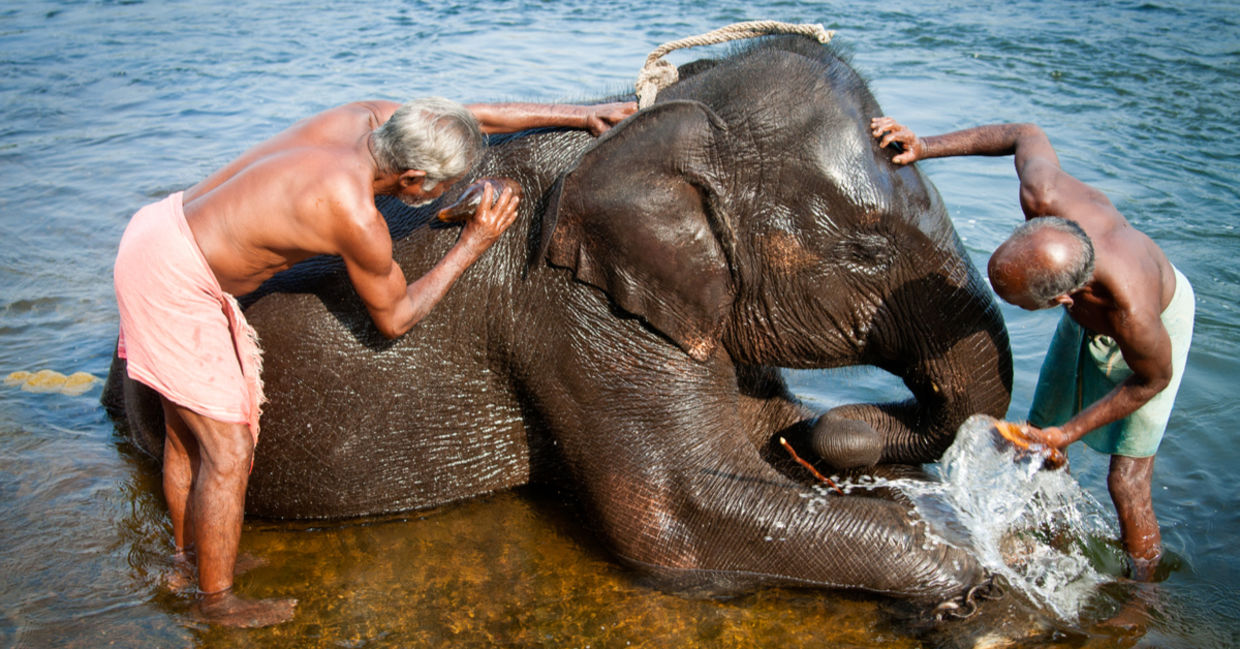
(johnnychaos / Shutterstock.com)
Elephants, known for their long trunks, Ivory tusks, and large floppy ears, are the largest land animals and can live 30 to 50 years in the wild. They may look slow and heavy, but they are remarkable, intelligent, and very social animals.
India is home to the smaller Asian elephant and to almost 60 percent of the earth's elephant population. And now, India is home to its first elephant hospital too.
Elephants play an important role in India's culture because of their intellect and mental strength. They are considered a sacred animal and the living incarnation Ganesha, the elephant-headed deity that rides a mouse. Elephants are prominently displayed in festivals and processions.
But there is a seedy side too. According to Wildlife SOS, India is plagued with a lack of awareness and education about elephants and that has caused the mistreatment and persistent enslavement for manual labor, performances, processions, entertainment, and street begging.
Wildlife SOS, established in 1995, addresses the issue of injured and sick animals that are forced to live and work in slums and crowded cities. They have offered medical services and training for the mahouts, elephant handlers, on ethical and humane treatment of the gentle giants.
“Captive elephants are not meant to be used and abused but instead have to be given the respect which an animal needs if you are going to be using the animal,” Geeta Seshamani, co-founder of Wildlife SOS told Reuters TV. To date, Wildlife SOS has rescued 26 elephants from circuses, temples, and street begging.
In November, Wildlife SOS opened India's first animal hospital that is located in the northern state of Uttar Pradesh near the conservation and care center that the organization runs.
According to the organization's press release, this state-of-the-art 12,000 feet jumbo hospital features x-rays, ultrasound machines, laser therapy, an in-house pathology lab, a hydrotherapy pool, and a huge medical hoist to lift the ailing animals.
“I think by building a hospital we are underlining the fact that elephants need welfare measures as much as any other animal,” Seshamani told Reuters TV.
The hospital is also equipped for overnight patient stays. An observation deck was built into the hospital so that doctors and students can observe and learn about elephant treatment.
Elephants do not have to be in the vicinity of the hospital to be treated. “Our hospital has a center with very portable kind of machinery,” Seshamani, said. “So, if an elephant is involved in a hit-and-run very far away anywhere in North India, we can go there, and we can take care of it on site.”
When the hospital was inaugurated on November 16, Wildlife SOS stressed that opening the hospital was a big leap for them and the animals they treat, as well as for the cause of Asian elephant conservation.
YOU MIGHT ALSO LIKE:
The Woman Who Can Put an Elephant to Sleep Just by Singing [VIDEO]
Europe’s First Elephant Sanctuary Will Soon Open in France
For the First Time in 37 Years, One Elephant Makes a Friend [VIDEO]







